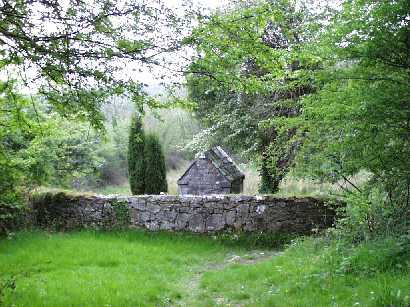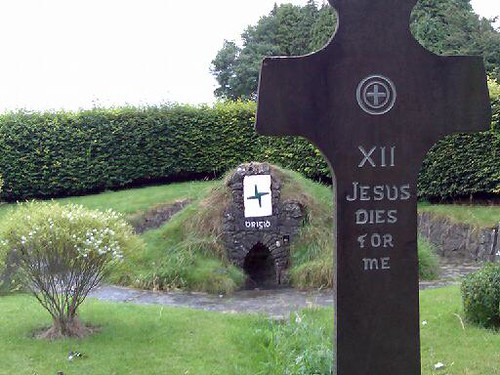
Holy Wells in Ireland
Once, when Mr. Sweeney and I were driving around a hairpin turn in
Sligo, between Boyle and Donegal, the hair on my head stood up and I got goose bumps on my arms. I joked that we must have passed a fairy place. (That would be me, making light of the unknown.) As we moved farther into the turn, there was a little sign, crudely hand-lettered, point- ing back to where we had passed. It read, “Holy Well.” He looked at me and I looked at him, and he believed me.
I knew of such wells, of course, but they’re like leprechauns, you don’t
really believe in them until you see one. Somehow it’s a little embarrass- ing to admit such beliefs in modern times. It was all right for Granny maybe, who had a prayer, a rhyme, and a charm for every occasion, but for a 21st- century grown-up? Not so much. Just a lot of old superstitious nonsense!
But come here to me. Holy Wells have been around since long before the arrival of Saint Patrick and the message of Christianity. They have lost none of their power through the many changings of the guard in Ireland. The druids used the waters to promote health and well-being. The ancient Celts understood that these places were powerful and attributed this power to the Otherworld, the spiritual source of everything. It is this power that has people visiting Holy Wells to this day.
There are Holy Wells all over Ireland. Each of them has a story. One is
good for conception and another will surely cure the blind. I don’t know how much stock can be placed in all these claims, but there are many who swear to the truth of cures, conceptions, and insights after visits to Holy Wells.
Some of the wells are said to contain salmon from tales of the great sal- mon of wisdom that come through to us from the times of the ancient eroes. The Salmon of Wisdom is an essential part of a well's magical properties. The practice of "paying rounds" (circling the well three times still practiced at holy wells. In the Saint Monachan well in Kerry there is said to be a salmon and an eel, and whoever sees them will benefit from having done the rounds, whether they seek health, wealth, or special intention.
Pilgrimages to Holy Wells often take place on the special days: St.
Brigid’s Day on the first of February, also the date of the old Celtic feast of Imbolc. This saint was once the Celtic goddess, Brighde, (Pronounced, breedge, like brie cheese with a “d” and “g” sound at the end.); Beltane, May 1; Lughnasa, August 1; and All Souls' Day, also known as Samhain, November 1, when it was believed that the veil between the living and the dead was at its most transparent. All of these are special days in the Celtic calendar and it was/is believed that the doors to the Otherworld are open at these times.
Churches were often built near or above the Holy Wells. The early
Celtic church used the waters for baptism. The Roman church did away with this practice and decreed that a font inside the church be used. A number of old churches contain a crypt or grotto that opens into a subterranean spring. This place---close to earth and water---is a hidden holy center of the sacred enclosure.
St. Brigid has many Holy Wells named for her. This is a list of just a few of them: St Bride’s Well, Kilbride parish, Co. Mayo, St. Brigid’s Well, Ardagh, Co. Longford; St. Brigid’s Well, Castlemanger, Co. Cork; St. Brigid’s, Well Chiffony, Co. Sligo; St. Brigid’s Well, Dunteer, Co. Louth; St. Brigid's Well, Inismagrath Parish, Co. Leitrim.
Some day ask me about "Oh Blessed Saint Ann."
Holy wells exist in most counties of Ireland. Cork, Kerry, Clare, Kil- dare, Sligo, Meath, and Roscommon have many. Should you wish to visit, here are some locations... (list can be found at end of original article.) | 













.jpg)






